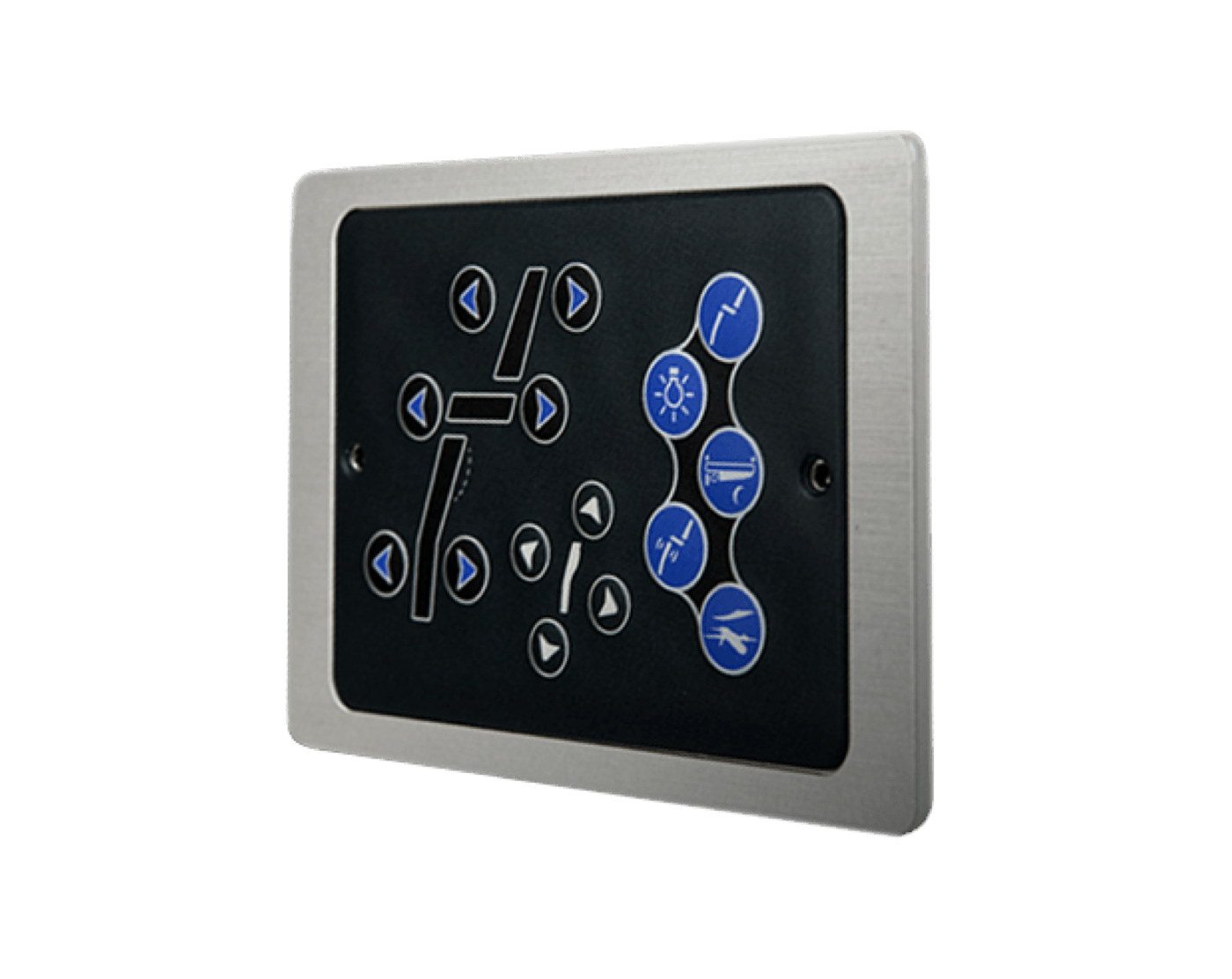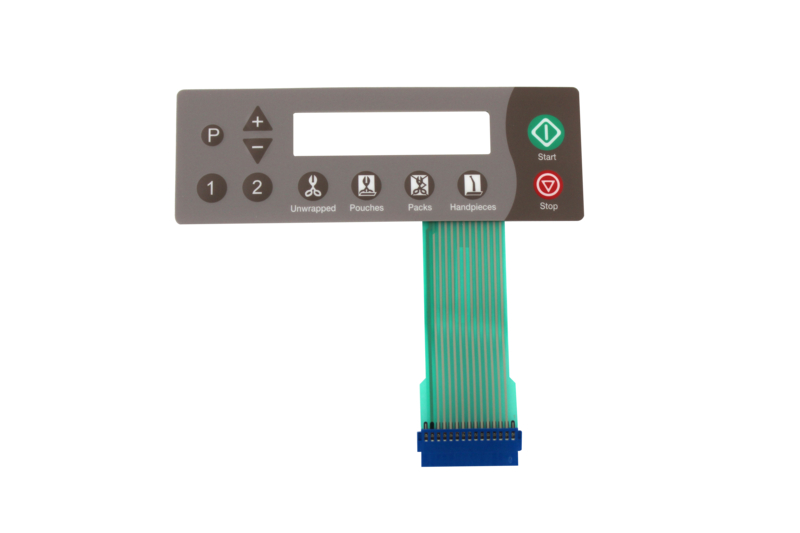Collaborating with an experienced membrane switch manufacturer can simplify your manufacturing process.
Collaborating with an experienced membrane switch manufacturer can simplify your manufacturing process.
Blog Article
Everything About Membrane Switch: Recognizing Its Design and Capability
When you believe about the control user interfaces in modern gadgets, membrane buttons typically come to mind. Let's explore what collections membrane switches over apart from various other control systems.
What Are Membrane Layer Switches?

Their seamless nature makes them easy to clean and resistant to dust and moisture, an essential function in several environments. Membrane switches can additionally be customized regarding form, dimension, and graphics, permitting suppliers to develop unique interfaces tailored to particular products. And also, they're light-weight and thin, which assists in lessening the general mass of gadgets. Overall, membrane switches play a significant role in boosting customer experience throughout a vast selection of applications.
Just How Membrane Layer Switches Work
When you press a secret on a membrane button, it activates a simple yet effective mechanism. The leading layer, often made of adaptable product, lowers onto a conductive layer below it. This activity bridges the gap in between conductive traces, completing an electric circuit. As soon as the circuit shuts, it sends a signal to the gadget's controller, which interprets your input.
You'll discover that the responsive responses varies based on the switch design, offering either a soft click or a more obvious feedback. As soon as you launch the key, the membrane returns to its original setting, resuming the circuit and stopping the signal. This procedure takes place virtually instantly, guaranteeing a responsive user experience.
Membrane switches are prominent due to their sturdiness and resistance to dirt and wetness, making them suitable for different applications, from family devices to medical devices. Recognizing this operation assists you appreciate their extensive use.
Key Elements of Membrane Buttons
Understanding the key parts of membrane buttons is essential for understanding their capability and style. At the core, you'll locate the visuals overlay, which supplies the aesthetic user interface for users. Beneath that, there's a spacer layer that separates the circuit layers, making certain that they do not make contact up until pushed. The circuit layer is where the magic takes place; it is composed of conductive traces that complete the circuit when you push the button. One more essential aspect is the glue support, allowing the button to adhere to surfaces securely. The safety layer guards against environmental factors and wear, expanding the button's life-span. Each element plays a substantial duty in guaranteeing reputable performance and customer communication. By comprehending these components, you'll gain understanding into exactly how membrane layer switches run and their significance in different applications.
Products Made Use Of in Membrane Layer Switch Style
The efficiency and durability of membrane switches over greatly depend on the products utilized in their design. You usually run into polyester and polycarbonate as main substrates due to their superb stamina and versatility. These products resist scrapes and chemicals, making them perfect for demanding settings.
The conductive layers commonly use silver or carbon, selected for their integrity and conductivity. membrane switch manufacturer. Silver supplies superior performance, while carbon is an affordable choice. For the overlay, you might consider a matte or shiny surface, depending on your visual requirements and user experience
Make specific to select adhesives that hold up against ecological factors like temperature and moisture. Picking the appropriate products will certainly guarantee your membrane layer button stands the examination of time.
Layout Considerations for Membrane Switches
While developing membrane switches, it's important to take into account numerous aspects that influence their capability and individual experience. Beginning by focusing on the format and button size; make specific they're intuitive and very easy to navigate.
Do not neglect the graphic layout; clear labeling and color comparison are considerable for discover this exposure. Confirm your design fits ecological variables, like dampness or temperature variants, which might affect efficiency. Finally, bear in mind the value of testing prototypes with genuine individuals to gather comments and make needed adjustments. This iterative procedure helps you improve the design, verifying it meets both practical and aesthetic needs effectively. By carefully thinking about these components, you'll create a membrane layer button that enhances use and fulfillment.
Applications of Membrane Layer Switches
Membrane buttons are versatile parts this page located in various applications, from industrial tools to customer electronics. You'll see their influence in devices that need sturdy interfaces and in tools that benefit from sleek layouts. Understanding these applications helps you appreciate the functionality and practicality of membrane buttons in daily innovation.
Industrial Devices Usage
When you're looking to enhance the functionality of industrial devices, membrane buttons use a reputable service that integrates durability with easy to use layout. These switches are ideal for harsh settings, providing resistance to dirt, wetness, and chemicals. Embrace membrane layer switches to improve your procedures and enhance general efficiency.
Customer Electronic Devices Assimilation
In the domain of consumer electronics, membrane layer switches play a crucial duty in enhancing customer interaction and device functionality. You'll discover them in gadgets like microwaves, push-button controls, and pc gaming consoles, providing a seamless way to connect with modern technology. Their sleek style allows for very discover this info here easy combination into various products, making controls instinctive and easy to use. With their capability to include graphics and backlighting, you can take pleasure in a contemporary aesthetic that complements the device's overall appearance. Membrane layer buttons also ensure sturdiness and resistance to dirt and dampness, expanding the lifespan of your electronics. By choosing membrane switches, you boost not just the performance but additionally the style of your tools, making everyday communications smooth and delightful.
Advantages and Negative Aspects of Membrane Switches
While membrane layer buttons offer a variety of advantages, they also include some disadvantages that you should take into consideration. One considerable advantage is their portable design, making them suitable for space-constrained applications. They're additionally cost-effective, offering a durable solution with a reduced production expense. Furthermore, their seamless surface area is simple to tidy, improving hygiene in atmospheres like medical facilities.

Nonetheless, there are disadvantages. Membrane switches can have a much shorter life-span contrasted to mechanical buttons, particularly under heavy use. They can also be less responsive, which may influence individual responses throughout procedure. In addition, if harmed, fixing them can be challenging and usually needs total substitute. Ultimately, their sensitivity to severe temperatures and ecological conditions may restrict their performance in certain settings. Balancing these pros and cons will certainly aid you determine if membrane buttons are the right fit for your job.
Often Asked Questions
For How Long Do Membrane Layer Switches Commonly Last?
Membrane changes typically last in between 5 to ten years, depending on usage and environmental conditions. You'll want to examine elements like wear, direct exposure to wetness, and temperature level fluctuations to gauge their longevity successfully.
Can Membrane Layer Changes Be Personalized for Specific Layouts?
Yes, you can customize membrane layer buttons to fit particular layouts (membrane switch manufacturer). You'll have the freedom to choose shades, shapes, and designs that match your task's requirements, guaranteeing they blend perfectly with your general visual
What Is the Cost Array for Membrane Layer Switch Manufacturing?
The cost variety for membrane layer switch manufacturing typically falls in between $1 and $10 per unit, depending on aspects like design intricacy, quantity, and products. You can obtain quotes from manufacturers to discover the most effective alternative.

Are Membrane Changes Water-proof or Resistant?
Membrane layer buttons can be designed to be water-proof or resistant, depending upon products utilized and building techniques. If you require them for wet settings, assure you specify those requirements during the design procedure.
Just How Do Membrane Switches Contrast to Traditional Switches?
Membrane layer switches are usually thinner and a lot more flexible than traditional switches, offering a smooth layout. They're usually less complicated to clean up and integrate, but could not offer the tactile comments you're made use of to with mechanical choices.
Verdict

Report this page